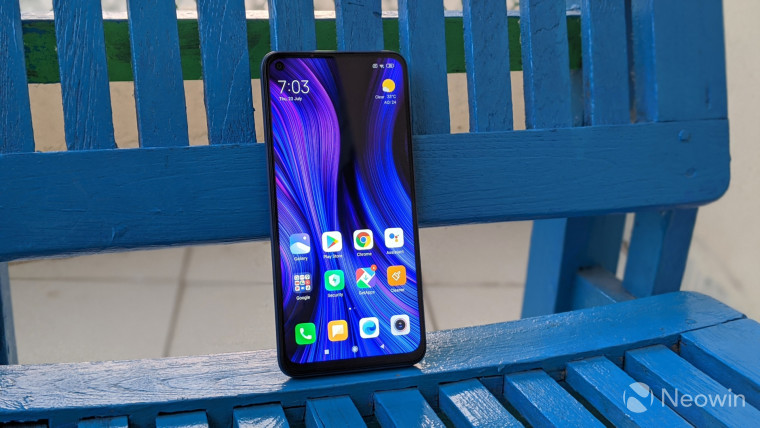
Earlier this week, Xiaomi launched the Redmi Note 9 smartphone in India – the last one in its Redmi Note 9 trilogy, having launched the Redmi Note 9 Pro and Redmi Note 9 Pro Max earlier this year.
The Redmi Note is Xiaomi’s bestselling smartphone series, and the one that catapulted the company as the budget smartphone leader in India. However, with three phones in the series now – along with the very similar POCO M2 Pro from the company’s sub-brand – the Redmi Note 9 has to ward off competition as well as establish its own ground within the Xiaomi portfolio.
The Redmi Note 9 is a quintessential 2020 budget phone with a lot of value for your buck and only a few compromises here and there. I got my hands on the Redmi Note 9 this week, and here are my first impressions of the same.
Specifications
- Operating System: MIUI 11; based on Android 10
- Display: 6.53-inch Full HD+ (2340 x 1080) | 19.5:9 aspect ratio | Corning Gorilla Glass 5
- Processor: MediaTek Helio G85 | 12nm process technology
- RAM: 4GB/6GB LPDDR4X
- Storage: 64GB/128GB eMMC 5.1 | Expandable up to 512GB with a microSD card
- Front Camera: 13MP in-display camera
- Rear Camera: Quad-camera | 48MP primary sensor | 8MP 118° ultra-wide | 2MP macro | 2MP depth sensor
- Battery: 5,020mAh battery | 22.5W fast charger | 9W reverse charging
- Dimensions: 162.3 x 77.2 x 8.9mm | 199g
Design

The Redmi Note 9 sports what it calls an ‘Aura Balance Design’ that we first saw on the Redmi Note 9 Pro. The design is utilitarian and functional but won’t win any awards. That said, the colorways are nicely done even though it’s a polycarbonate chassis.
The phone is a tad clunky – it’s larger than an iPhone 11 Pro Max, for example – but the even weight distribution and the curved rear allow for a good grip and a surprisingly nice hand feel.
The large size is of course due to the 6.53-inch display. The LCD screen offers decent vibrancy and brightness along with good viewing angles. The colors look a little washed out but fair for a budget smartphone. There’s Corning Gorilla Glass 5 protection as well.
Even on the rear, the camera unit is protected by Gorilla Glass 5 (not the complete back, mind you, considering its not glass) and there’s the P2i water-resistant coating to protect from accidental spills that is now a standard feature on Xiaomi smartphones.
Performance

While the Redmi Note series has offered middling performance in the past, Xiaomi’s choice of MediaTek Helio G85 processor aims to please those who value high-performance smartphones in the segment and PUBG warriors - especially in India. While the phone comes in 3GB + 64GB and 4GB + 128GB memory variants in other markets, in India, Xiaomi offers jacked up 4GB + 64GB, 4GB + 128GB, and 6GB + 128GB variants to satiate the specifications-hungry audience.
In real-world use, the Note 9 mostly breezes through anything thrown at it. There are occasional jitters here and there, especially when gaming, but nothing annoying. The annoying bit is the constant-notification-shooting bloatware that’s bundled with MIUI 11, the company’s proprietary UI layer based on Android 10. The ads and useless notifications from apps don’t make for a pretty user experience although considering the number of smartphones Xiaomi sells, it is clear that most people don’t care about this compromise.
There’s a large 5020mAh battery (which is why the phone is close to 200 grams in weight) inside but the highlight is the support for 22.5W fast charging (18W in global variant) with a fast charger available in the box. At the moment, Indian units too are capped at 18W but Xiaomi has confirmed that a future software update will enable 22.5W charging capability. The USB Type-C port also supports 9W reverse charging.
Camera

For a budget smartphone, a quad-camera setup is impressive anyway, and Xiaomi adds a fair bit of software optimizations and a slew of camera modes to up the ante.
The primary camera is a generous 48MP f/1.8 wide-angle lens. Then there’s an 8MP ultra-wide lens with a 118-degree field-of-view, a 2MP macro lens, and a 2MP depth sensor. No telephoto lens, mind you. The camera’s pretty good in well-lit conditions and there’s a night mode to take good enough photos in the dark. It does a fine job – of course, don’t expect the night mode performance you’ve seen on an iPhone or a Pixel. On the front, there’s a 13MP selfie camera – punched in display this time, instead of being housed in a small notch at the top of the screen.
When it comes to video, the main camera is limited to 1080p even though last year’s Redmi Note 8 offered support for 4K video capture. This is likely because of the limitation of the Helio G85 processor.
Summary

For a while now, the Note series from Xiaomi is a reliable option on the table if you are looking for an affordable smartphone that checks all the boxes. The kind with which one can’t go wrong, and the Redmi Note 9 continues along that path.
There’s a big display, many cameras, and a large battery to satisfy more than one kind of customer. Things like fast charging are a generous add-on. Starting at ₹11,999 ($160) in India, the Redmi Note 9 packs a punch and I look forward to spending more time with it for a deeper dive in the coming days for an exhaustive review coming soon.

















3 Comments - Add comment